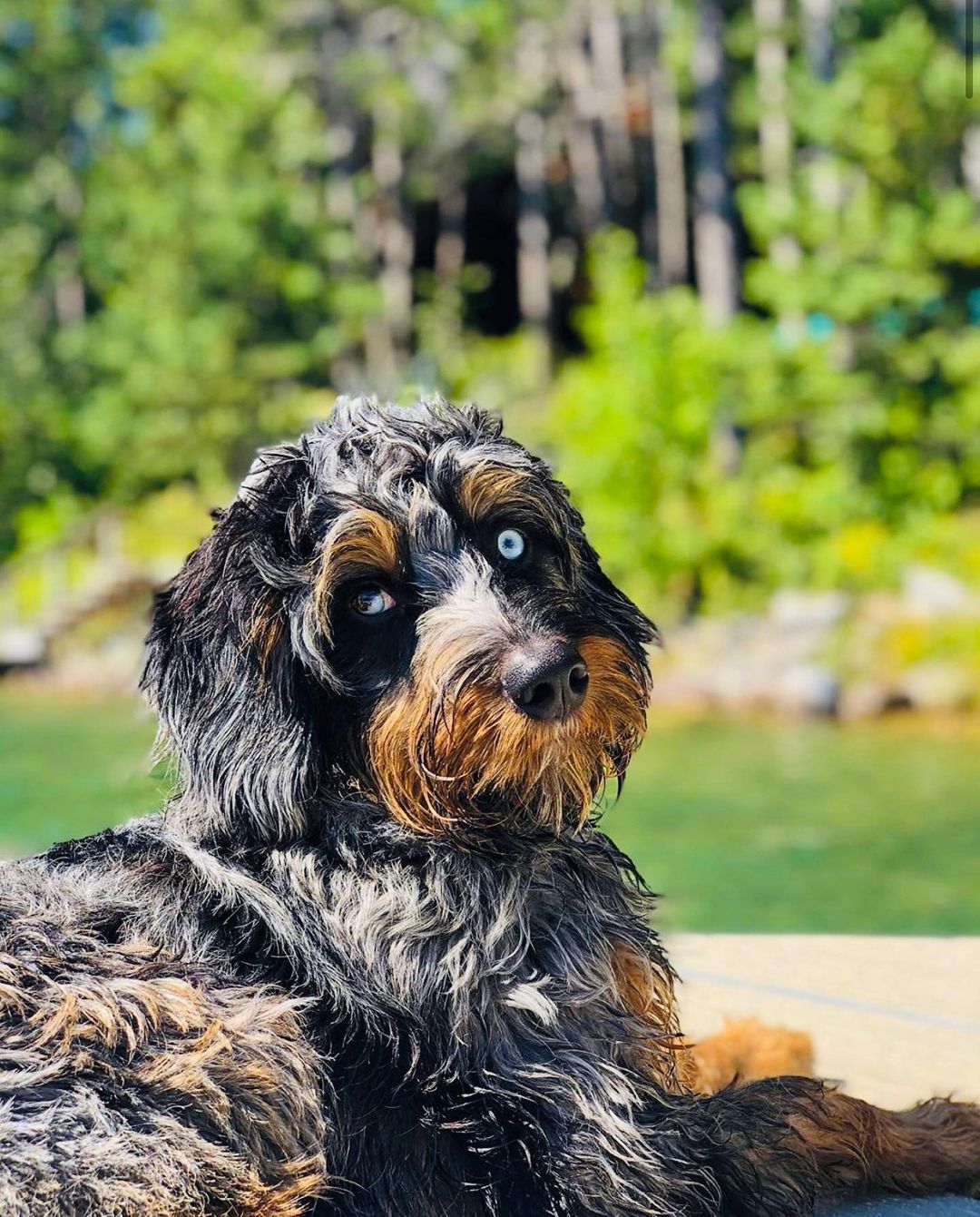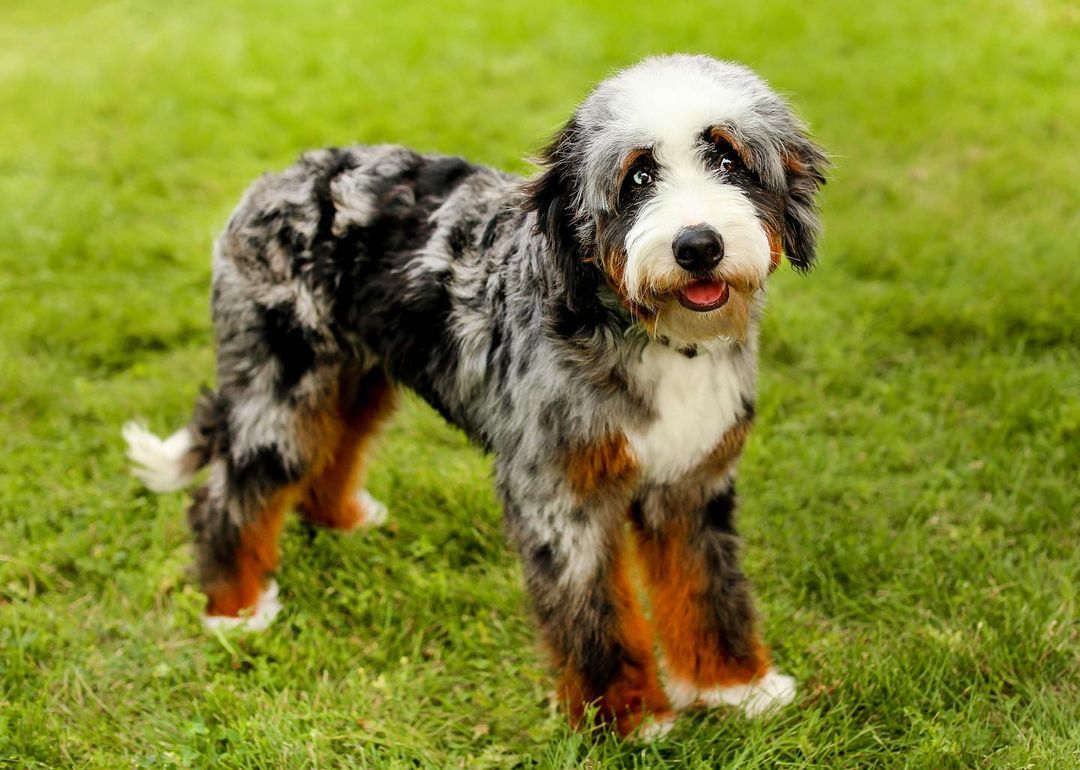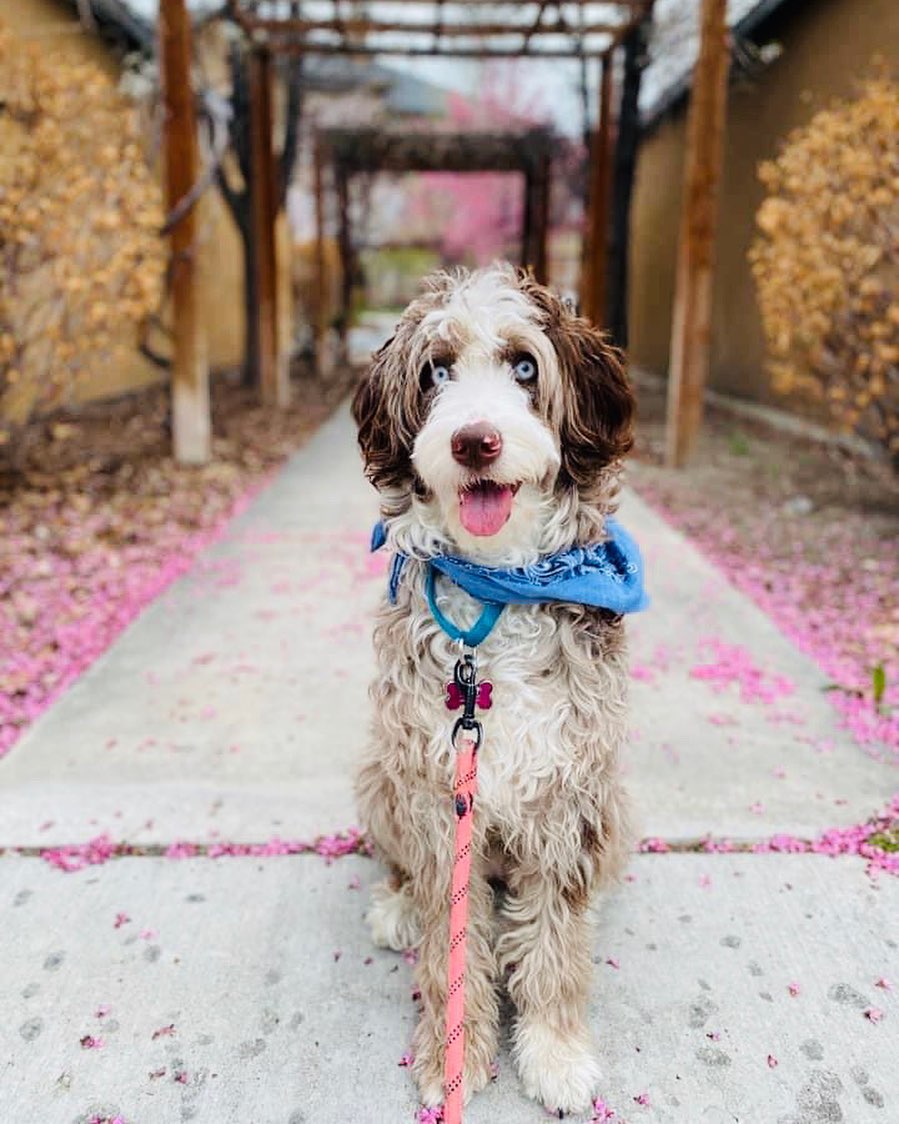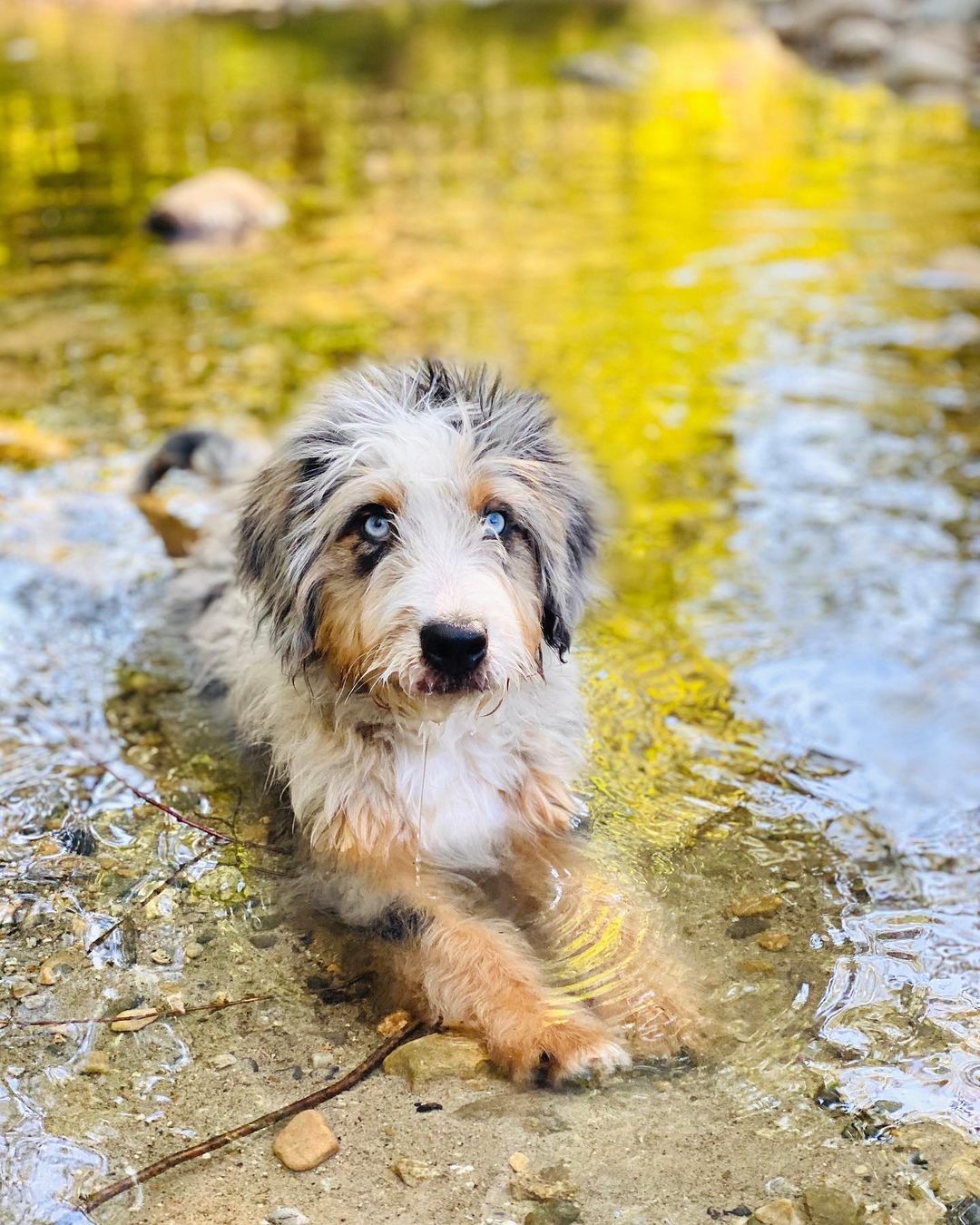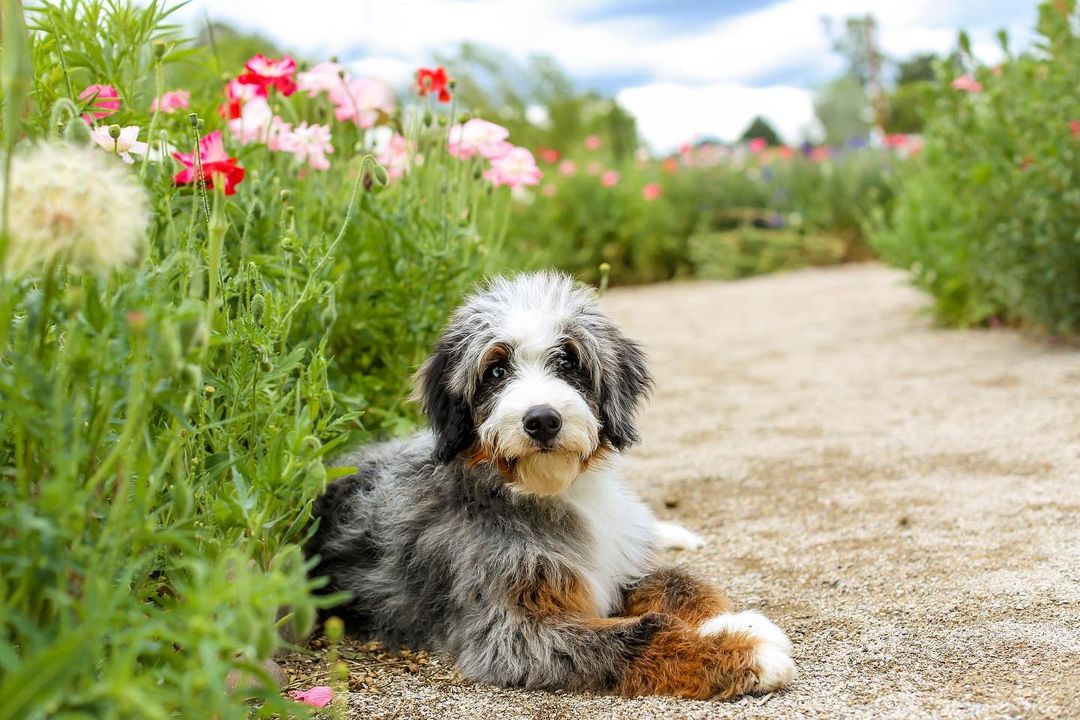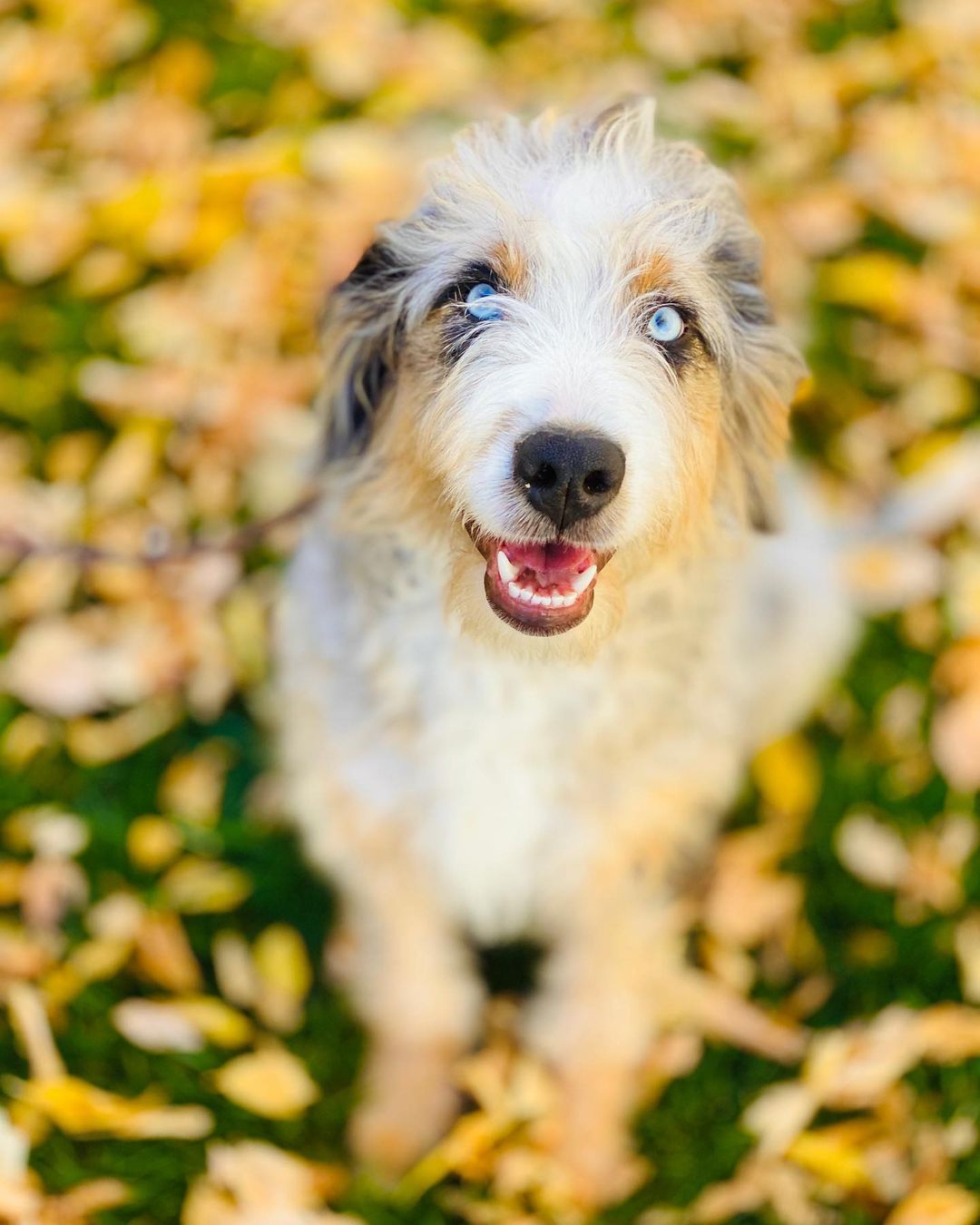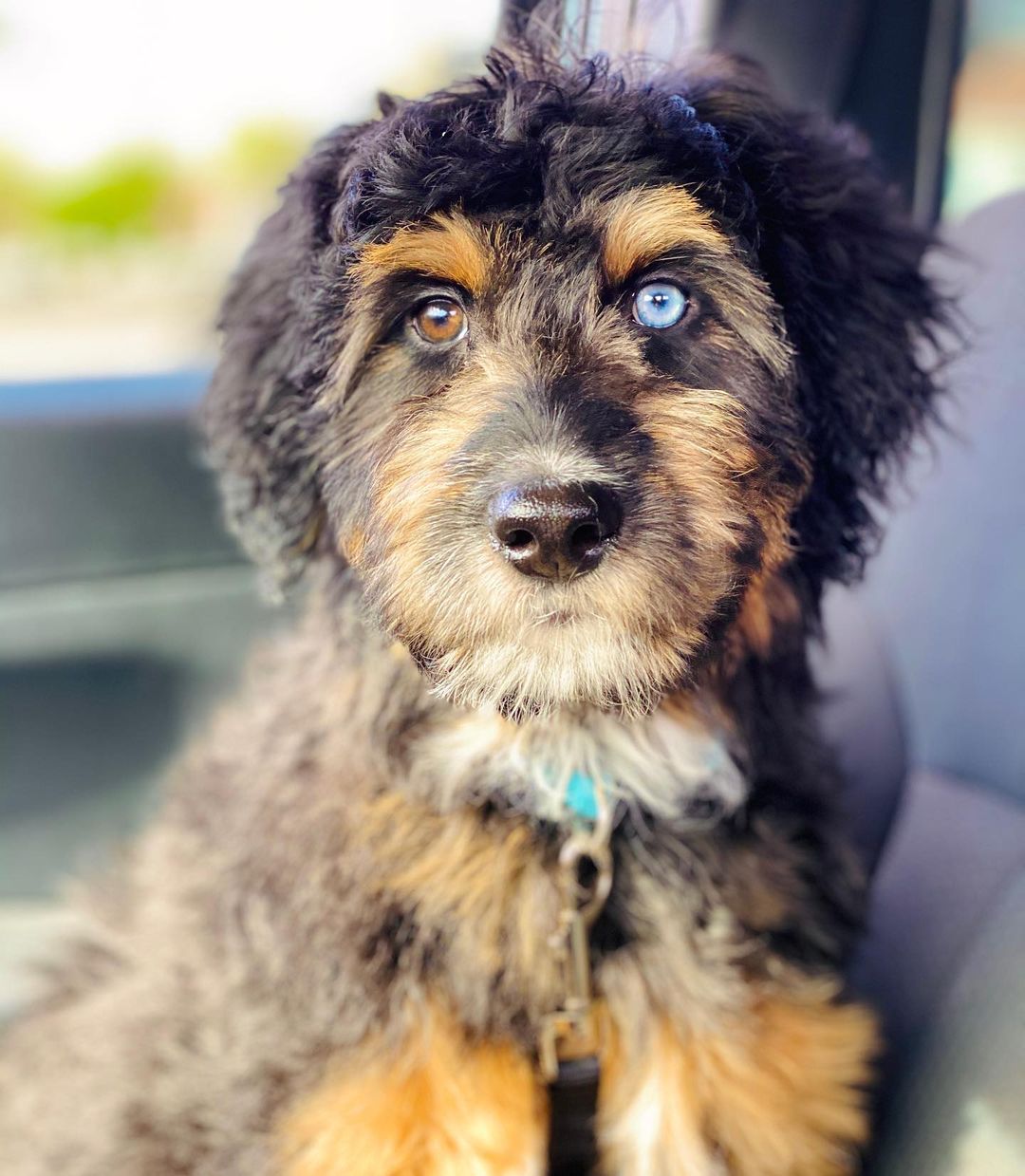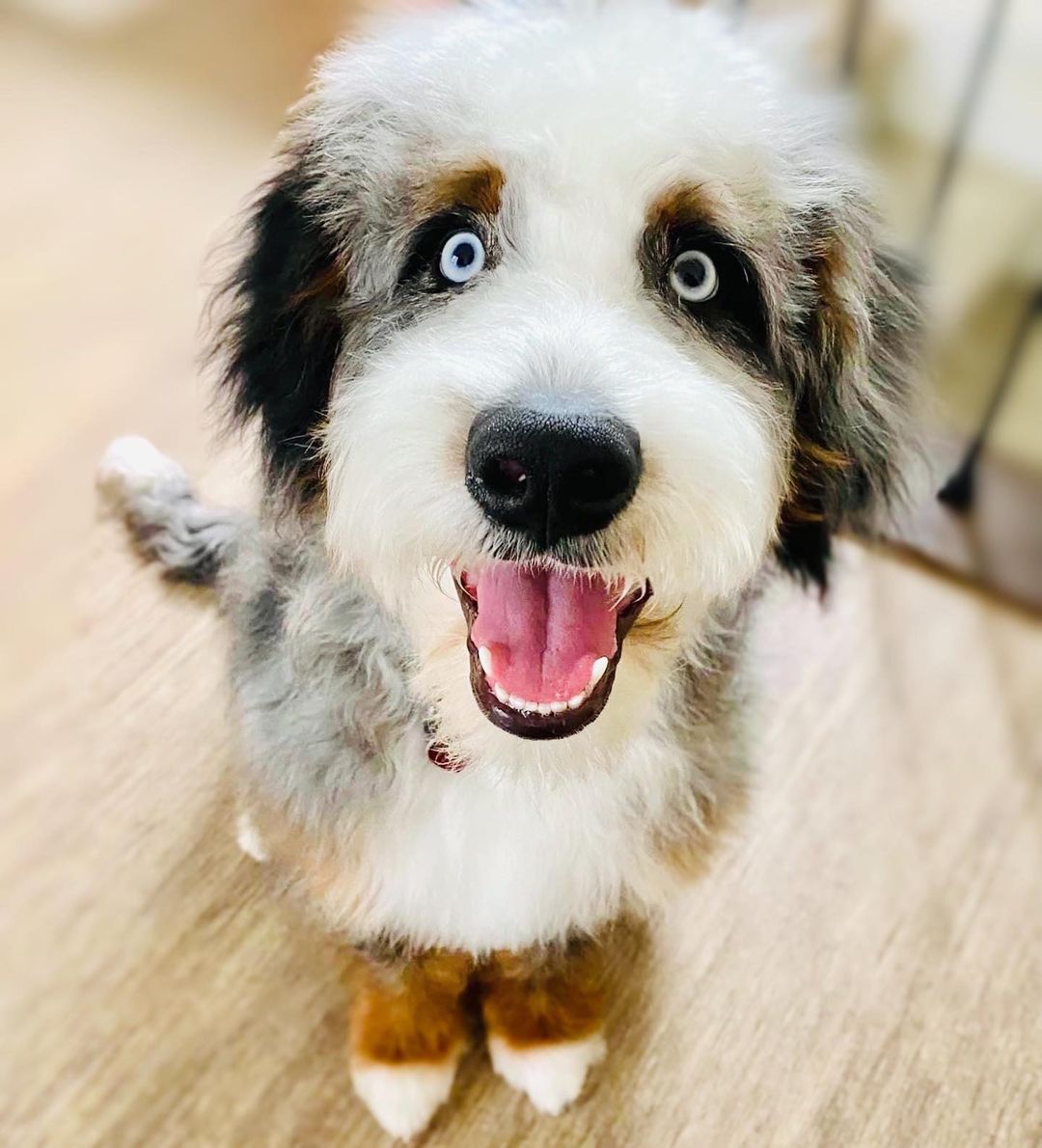If you are looking for a crossbreed that mixes intelligence with more intelligence, the Aussiedoodle is the place for you.
A cross between two of the world’s smartest and most beautiful breeds, the Aussiedoodle appears to have it all.
However, that doesn’t mean this is the crossroads for everyone. The Aussiedoodle is a lot more going for it than it looks, and if you’re wondering if this would be the right dog for you, read on.
What is an Aussiedoodle?
The Aussiedoodle, also known as the Australian Shepherd Poodle Mix, the Australian Shepherd Poodle, the Aussie Poodle Mix, or even the Aussiepoo, is a mix of the purebred Australian Shepherd and the purebred poodle.
A rising favorite among designer dog breeders, this crossbreed brings together brain and beauty for the seemingly perfect family dog.
But did you know that there is controversy around the subject of crossbreeding?
Right, designer dogs like the Aussiedoodle are at the center of a serious debate in the canine world.
Read on to find out why.
The Lowdown on the Designer Dog Controversy
A crossbreed, also known as a hybrid or designer dog, is the offspring of two purebred parents.
While there is debate as to whether a crossbreed is really just a mutt with a fancy name, practitioners insist that nuts and crosses are very different.
In fact, they point out that while nuts are made up of several different breeds in their bloodline, crossbreeds are the specially selected offspring of two purebred parents.
This is where the term “Designer Dog” comes into play. To learn more about Designer Dogs versus Mutts, read this article here
But how does designer dog health compare to purebred dogs?
It is a known fact that purebred dogs that have been bred for generations to maintain certain traits inherent in the breed standard have some genetic health problems as a result.
Those who believe in crossbreeding hope that this could be a solution to this problem and reduce the chances of genetic health problems being passed on to the offspring by expanding the gene pool.
However, other experts disagree and insist that crossbreeds are just as prone to certain health problems as purebreds.
For more objections to crossings click here>.
With the debate still going on, it is difficult to say who is right.
One thing is certain, however, if you are bringing home a new dog, it is wise to learn as much about them as you can.
With that in mind, learn more about the Aussiedoodle crossbreeding!
Origin of the Aussiedoodle
The Aussiedoodle is a newer hybrid whose true origin is still unknown.
If you want to learn more about where he came from, it’s best to look into the history of his purebred parents.
Both the Australian Shepherd and the Poodle have fascinating roots that eventually led to the intelligence, loyalty, and all-around cuteness that make up their Aussiedoodle offspring.
Let’s start with the Australian Shepherd.
Origin of the Australian Shepherd
Contrary to its name, the Australian Shepherd is an American native dog that was refined in California in the 19th century.
This is a breed that was a staple food as the cowboy’s best friend and used its intelligence as a herding and ranch dog in the American West.
In fact, the Australian Shepherd is still one of America’s most popular herding dogs on farms across America.
The Australian Shepherd is a serious working dog who is happiest to deal with a job. Perhaps that’s what makes him such a wonderful service dog for people in need.
According to the American Kennel Club’s list of the most popular dog breeds, the Australian Shepherd is also a fantastic family dog.
It ranks 16 out of 194 on the list of Most Popular Dog Breeds in America.
Now let’s learn about the poodle.
Origin of the poodle
Although the poodle is often referred to as the “French poodle” and although it is the national dog of France, it originally comes from Germany, where it was used to hunt ducks.
The 400-year-old Poodle breed may be most famous for their imaginative fur, but did you know that their extravagant haircut actually had a purpose that went well beyond vanity?
Back then, the poodle swam in cold, rough water conditions to fetch ducks for its hunting masters, and thus the famous poodle haircut came about.
Poodle pompoms are designed to protect the poodle’s delicate body parts and allow them to be agile in the water. They are an integral part of the poodle coat culture today.
Today, the poodle ranks seventh out of 194 on the American Kennel Club’s list of America’s most popular dog breeds!
With fame, intelligence, and a good work ethic down its line, it’s no wonder the Aussiedoodle is becoming a popular crossbreed!
But how big will it get and what will it look like? Let’s find out.
How big an Aussiedoodle is – height and weight
Since the Aussiedoodle is a crossbreed, the Aussiedoodle size will depend on the size of its purebred parents.
A mini Aussiedoodle or a toy Aussiedoodle is usually a mix of an Australian Shepherd and a Miniature Poodle.
The Standard Aussiedoodle is a mix of the Australian Shepherd and the Standard Poodle.
Keep in mind that your Australian Shepherd Poodle mix will vary in size depending on how tall both purebred parents are.
Let’s look at the variations you could get.
Size information
The Australian Shepherd is 18 to 23 inches tall and weighs around 40 to 65 pounds.
The poodle, on the other hand, is available in three sizes:
- Standard: The standard poodle is the largest of the three size variants. He is over 15 inches tall and weighs 40 to 70 pounds!
- Miniature: The mini poodle is medium in size and between 10 and 15 inches tall and weighs between 10 and 15 pounds.
- Toy: The smallest of the poodles, the Toy Poodle stands only 10 inches tall and weighs only four to six pounds.
So, your adult Aussiedoodle can be anywhere from 10 to over 15 inches in size and weight from 10 to 70 pounds, depending on whether they’re a standard, toy, or miniature Aussiedoodle.
However, many breeders state that the average weight of an adult Aussiedoodle is around 25 to 70 pounds. So, a potential owner should prepare for a medium to large dog.
What does an Aussiedoodle look like?
Keep in mind that the Aussiedoodle is a crossbreed, meaning it can inherit a number of traits from its purebred parents! The way he looks is really left to chance and the purebred parent he prefers the most on a genetic level.
Let’s take a look at the possible traits your Aussiedoodle could inherit.
The Australian Shepherd has a double-layer, waterproof coat that is perfect for his ranch days! Its undercoat is thick and its outer layer is longer on the body and slightly shorter on the face.
He has erect ears and light eyes that are brown, amber, or even blue.
Aussie colors
The Aussie is available in six standard colors:
- Blue merle
- Red Merle
- black
- Red tricolor
- Black tricolor
- Tan
Poodle colors
The poodle, whether standard, miniature, or toy, has a thick curly coat that can come in a variety of color options, including:
- black
- apricot
- White
- cream
- Tan
- Blue Belton
- blue
- silver
- sable
- brown
Keep in mind that your Aussiedoodle will have a coat and appearance more like the Aussie or the Poodle. It could also end up somewhere in between in terms of looks.
Temperamental characteristics of the Aussiedoodle
As with size and appearance, the Aussiedoodle temperament depends on what it inherits from its parent breeds.
While we can safely say that Aussiedoodle is a pretty smart crossbreed, considering its parents are two of the brightest purebreds, there are a few other traits your Aussiedoodle could inherit.
Australian Shepherd temperament
The Australian Shepherd, for example, is incredibly intelligent, but that doesn’t mean he’s the dog for everyone.
He’s happiest as a working dog, which means he needs plenty of mental stimulation so as not to make him boring.
The Aussie will be energetic and playful, and will require a lot of play and exercise!
He loves the outdoors and enjoys getting messy, which makes him a great dog for fun-loving kids and families.
However, if the Aussie’s energy and intelligence are not used properly, it can lead to destructive and territorial behavior.
He bonds very closely with his family. Because of this, he is not doing well if left alone for long periods of time.
He gets on well with other pets, but the owners are wary of the Aussies, who consider themselves seasoned shepherds.
Poodle temperament
The poodle is also a breed known for its brain. As proud as he is, this lively breed requires a lot of exercise and play.
His intelligence makes him an excellent dog for anyone who wants to delight their friends and family with a range of tricks.
The poodle is a natural entertainer. He is sporty and likes to get dirty!
He’s a great family dog and does well with kids and pets, although his hunting skills have given him natural instincts to look for smaller animals.
Keep it away from smaller pets like birds, hamsters, guinea pigs, etc.
Probably Aussiedoodle temperament
Since the Aussie and Poodle are such great family pets, you can bet your Aussiedoodle will be there too.
However, we recommend early socialization and obedience training for all dogs to ensure they are well-rounded and adaptable.
Any dog bred with an Australian Shepherd is particularly encouraged to indulge in training for socialization and obedience early on.
According to the AKC, one of the main reasons Aussies and their crosses end up in shelters is because they haven’t been properly socialized, trained, and the owners didn’t know how to cut all that energy down.
This also applies to the smallest Aussiedoodle types. Even the mini Aussiedoodle temperament will benefit from training and socialization.
Aussiedoodle shedding
Now that we’ve established that the Aussiedoodle is a crossbreed, and a crossbreed can inherit any number of traits from its purebred parents, it should come as no surprise that grooming and general grooming can go either way.
Do you pour Aussiedoodles? Is the Aussiedoodle hypoallergenic?
The truth is, there really is no such thing as a hypoallergenic dog.
However, the poodle is considered a good choice for allergy sufferers when you consider that they shed significantly less than many other breeds and less allergy-causing dander in their fur.
However, the Australian Shepherd is a shedder, and since you are dealing with a cross between the Australian Shepherd and the Poodle, the chances are that it is not “hypoallergenic”.
Aussiedoodle shedding and Aussiedoodle grooming go hand in hand.
Aussiedoodle grooming
You should be sure that you have the right tools to keep your coat looking great and to keep as much loose hair away from your home and clothing as possible.
As mentioned earlier, the Australian Shepherded is a seasonal shedder.
For this reason, he must be groomed weekly so that his coat always looks good and is free of matting and tangles.
Remember, the Aussie is an active dog who can leave the house clean and come back dirty.
Still, if he doesn’t come back covered in mud, he really only needs to bathe occasionally.
The purebred poodle, on the other hand, requires thorough grooming, especially if an owner wants to show him off. Most owners who choose to show off their poodles will either learn to cut their fanciful coats themselves or they will go to a cleaning lady.
Other owners who aren’t interested may opt for a puppy cut, which means they forego the poodle’s famous pompoms and opt for a more manageable cut.
General care
Keep in mind that your Aussiedoodle can either inherit a coat from its purebred parents or it could end up somewhere in between the two.
Because of this, nursing care may vary.
Of course, your Aussiedoodle needs to be cleaned with the ears regularly to avoid wax buildup and moisture that could lead to infection.
He will also have to cut his nails frequently to keep them from breaking and cracking.
As for diet, the active and sporty Aussiedoodle will benefit from a high-quality dog food with meat proteins as the first three ingredients.
He also needs fresh water every day and plenty of exercises and mental stimulation.
What are the exercise and training requirements for an Aussiedoodle?
As mentioned earlier, the Aussiedoodle is a very active and intelligent dog. Because of this, he needs a lot of physical and mental stimulation.
Not for the beginner, the highly intelligent and energetic Australian Shepherd is a thoroughly working dog who will be happiest with doggy jobs and constant training.
He needs at least an hour or two of exercise a day and an owner willing to teach him new tricks and give him a specific purpose, such as picking up the newspaper every morning or taking groceries away.
Because they are so intelligent and loyal to their family members, Aussies are very easy to train. However, you need to start training very early and owners should be prepared for the high amount of energy these dogs have.
Patience, early socialization, and obedience training are keys to this active and smart breed.
The poodle is a smart breed too and should be a breeze to train them too.
As long as the owners are consistent, the poodles look forward to pleasing and showing off.
They are human from nose to tail, but they need plenty of exercise and exercise to stay happy, just like the Australian Shepherd.
Because of this, it is easy to assume that your Aussiedoodle is a very energetic dog that will require a lot of mental and physical activity, as well as early socialization and obedience training, to be happy and healthy for a lifetime.
Aussiedoodles average lifespan and health problems
The Aussiedoodle crossbreed will be prone to what the parent breed is also prone to. For this reason, it is best to study all of the Australian Shepherd and Poodle health conditions.
The Australian Shepherd Dog has a lifespan of 12 to 15 years and is prone to hip dysplasia, eye diseases, drug sensitivity, and epilepsy.
The poodle has a lifespan of 10 to 18 years and is predisposed to hip dysplasia, epilepsy, progressive retinal atrophy, Addison’s disease, thyroid problems, gas, and hypoglycemia.
To improve the quality of life in your Aussiedoodle, we recommend an yearly check-up to ensure that it is ship-shaped.
Early health checkups can also help you prepare for, or even prevent, certain health issues your Aussiedoodle may have in the future.
Is an Aussiedoodle the right crossbreed for me?
The Aussiedoodle is an active, smart crossbreed that works best in homes with large, fenced-in yards. He will also benefit from owners who have prior experience with dogs and can train intelligent, high-energy breeds.
You should also keep in mind that the Aussiedoodle is likely to bond strongly with its family. He may not tolerate being left alone for a long time.
Brushing and spilling can also be an issue, so allergy sufferers should keep this in mind when considering an Aussiedoodle.
If you are an active owner who understands what it takes to train and care for a smart, active dog, he might be the perfect companion for you!
How do I find an Aussiedoodle puppy?
The Aussiedoodle is an admired crossbreed that combines the brain and beauty of two very popular dog breeds! But how can you find Aussiedoodle puppies?
If you are considering rescuing an Aussiedoodle dog from a shelter, keep in mind that finding an animal in your local rescue can be based on your point of view.
However, if you are willing to be patient, one of the many perks of saving an Aussiedoodle will be price, since shelters cost a lot less than breeders. Not only that, but most animal shelters actually cover the initial vet fees!
On the other hand, when looking at Aussiedoodle breeders, keep in mind that the Aussiedoodle price will be much higher, especially if your Aussiedoodle parents’ parent breeds are high quality.
Be prepared to spend anywhere between $ 500 and $ 1,000 on an Aussiedoodle when you go through a breeder.
Make sure to ask plenty of questions of your breeder and keep in mind that reputable breeders can provide health certificates showing that their litters have been screened for heritable health conditions.
Remember that early socialization and obedience training are keys to a happy, healthy, and well-rounded dog, especially when it comes to the Aussiedoodle.
Do you have an Aussiedoodle and love their intelligence and energy? Tell us all about him in the comments section!


